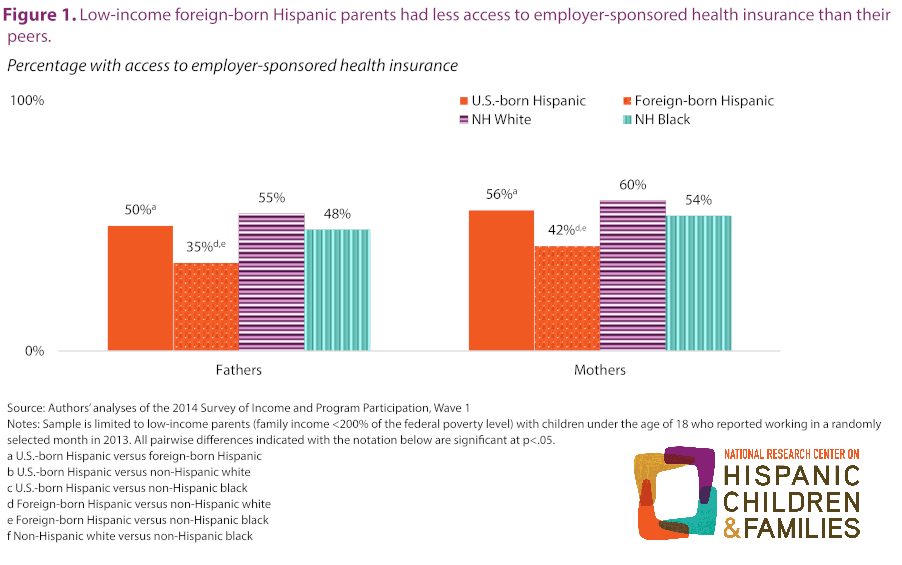Less than half of low-income immigrant Hispanic parents have employer-sponsored health insurance
Nov 22, 2019
Less than half of low-income immigrant Hispanic parents have employer-sponsored health insurance
Despite relatively high levels of employment, immigrant Hispanic parents have relatively low rates of employer-sponsored health insurance, according to a research brief examining the employment patterns of low-income parents. The study from The National Research Center on Hispanic Children & Families found that 35 percent of Hispanic fathers and 42 percent of Hispanic mothers who were born outside of the United States worked in a job with access to employer-sponsored health insurance. In contrast, access to employer-sponsored health insurance was more common among Hispanic parents who were born in the United States, as well as among black and white parents. Access to health insurance through employers ranged from 48 to 55 percent for low-income black, white, and nonimmigrant Hispanic fathers and from 54 to 60 percent for low-income mothers across these groups.

With rising health care costs, access to health insurance has become increasingly important for everyone, but particularly for low-income families. Insurance can provide access to health care services that increase parents’ chances of remaining healthy enough to work and earn an income, and it can also buffer against the potentially devastating costs of a medical emergency.
Suggested Citation:
National Research Center on Hispanic Children and Families. (2019). Less than half of low-income immigrant Hispanic parents have employer-sponsored health insurance. (Hispanic Family Facts series). https://doi.org/10.59377/749z5121u
Copyright 2025 by the National Research Center on Hispanic Children & Families.
This website is supported by Grant Number 90PH0032 from the Office of Planning, Research & Evaluation within the Administration for Children and Families, a division of the U.S. Department of Health and Human Services totaling $7.84 million with 99 percentage funded by ACF/HHS and 1 percentage funded by non-government sources. Neither the Administration for Children and Families nor any of its components operate, control, are responsible for, or necessarily endorse this website (including, without limitation, its content, technical infrastructure, and policies, and any services or tools provided). The opinions, findings, conclusions, and recommendations expressed are those of the author(s) and do not necessarily reflect the views of the Administration for Children and Families and the Office of Planning, Research & Evaluation.